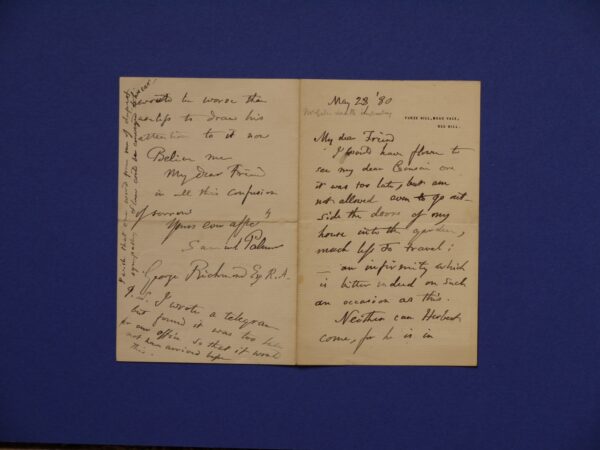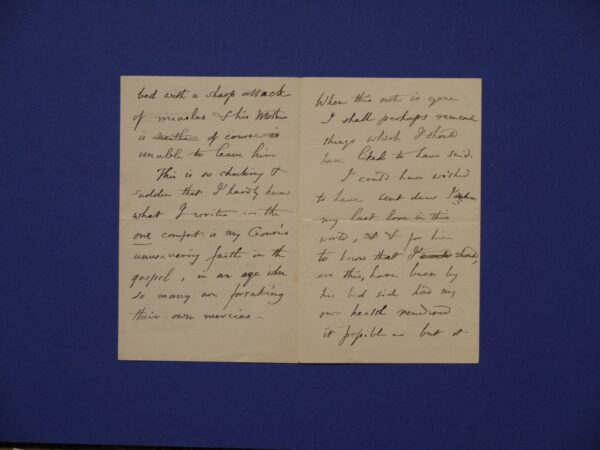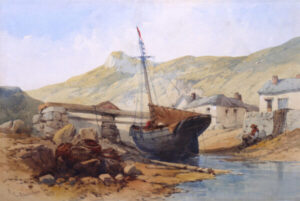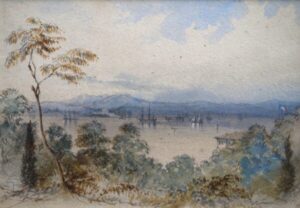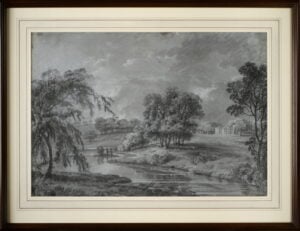Description
Content:
Furze Hill, Mead Vale, Red Hill May 28/1880
My dear Friend,
I should have flown to see my dear Cousin ere it was too late, but am not allowed even to go outside the doors of my house into the garden, much less to travel:- an infirmity which is bitter indeed on such an occasion as this. Neither can Herbert come, for he is in bed with a sharp attack of measles and his mother is of course unable to leave him. This is so shocking and sudden that I hardly know what I write – the one comfort is my Cousins unwavering faith in the gospel, in an age when so many are forsaking their own mercies. when this —? is gone I shall perhaps remember things which I should have liked to have said. I could have wished to have sent dear John my last love in this world, and for him to know that I should ere this, have been by his bed-side had my own health rendered it possible – but it would be worse than —? to draw his attention to it now. I wish that one word from me of deepest sympathy and love could be conveyed to his ear. Believe me my dear friend in all this confusion of sorrows.
Yours ever affectionately,
Samuel Palmer.
George Richmond Esq R.A.
P.S. I wrote a telegram but found it was too late for our office so that it would not have arrived before this
